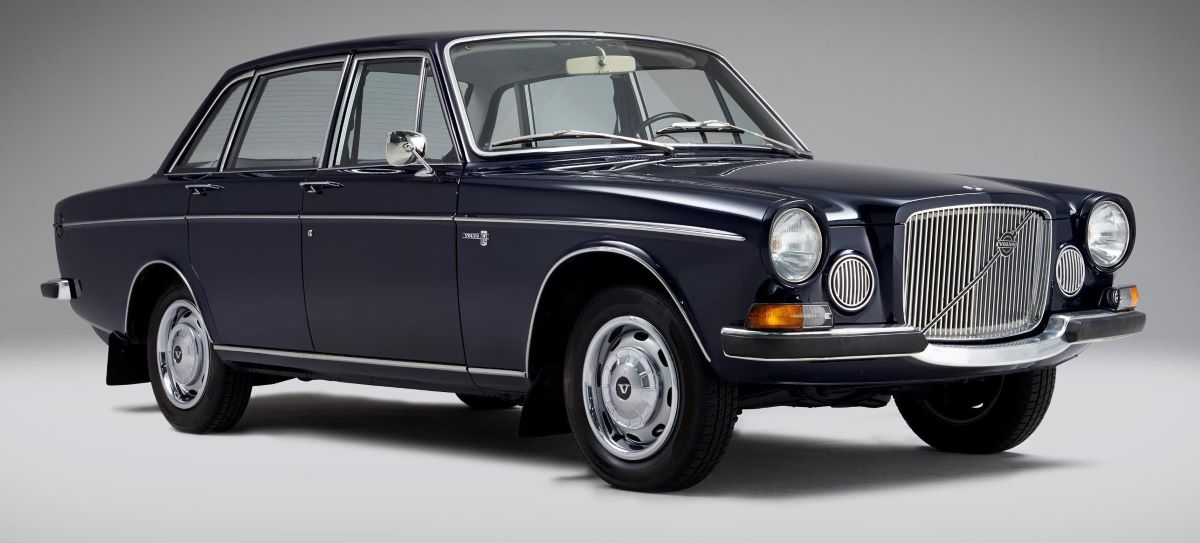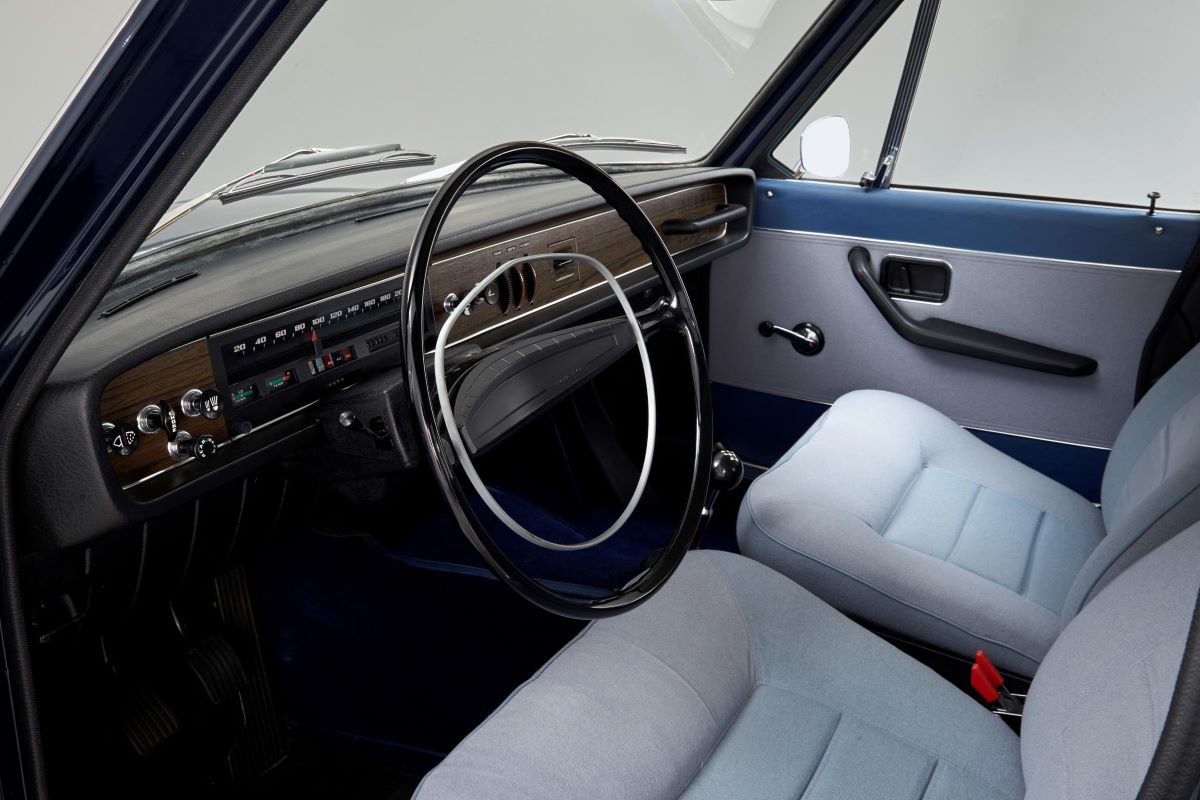
VOLVO 164
PRODUCTION 1968-1975
In the autumn of 1968 Volvo presented the Volvo 164. It was a development of the Volvo 144 but had a more prestige-oriented position.
The principal difference in technical terms was that the Volvo 164 had a 3.0-litre, in-line, 6-cylinder engine under the bonnet. This engine had been developed from the 2.0-litre, 4-cylinder engine that was introduced for the 140 Series at the same time, in 1968. From the beginning, the 164 had two carburettors and it was later also available with fuel injection.
This was the first time in 10 years that Volvo was able to offer a 6-cylinder car. The last time had been when the taxis in the 830 Series were built.
However, when it came to cars aimed at private buyers, Volvo had not had a 6-cylinder car for almost 20 years, since 1950 when production of the PV60 ceased.
As far as the exterior of the 164 was concerned, the front had its own styling. The bonnet was longer, to make room for the larger engine. The shape of the front also imparted greater prestige owing to the large grille.
In the interior, the seats were totally different, the materials were more luxurious and leather upholstery could be specified.
The Volvo 164 was produced between 1968 and 1975. Most of the cars produced during the last year were sent to the USA.
TECHNICAL SPECIFICATIONS
- Model: 164
- Variants
- Produced: 1968 -1975
- Volume: 146008
- Body: 4-door saloon
- Engine: 6-cylinder, in-line, overhead valves, 2,978 cc, 88.9 x 80 mm, 135-175 bhp.
- Transmission: 4-speed manual, 4-speed manual with electrical overdrive or 3-speed automatic.
- Brakes: Hydraulic, discs on all wheels.
- Dimensions: Overall length 470 cm, wheelbase 270 cm.

While other parts of the world were in a state of upheaval in 1968, revolution was far from people’s minds at Volvo in Gothenburg, Sweden. Instead, they were focusing on the launch of the new prestige model, the 164.
The notion of designing a slightly larger, more exclusive model had existed for a long time. In the late 1950s, a big luxurious Volvo with a V8 engine and a powerful, vertical grille was planned. However, this project died a death in 1960 when a survey indicated that compact cars were the future, especially in the US.
But the launch of the 140 series in 1966 gave rise to the idea of placing a straight-six-cylinder engine in the 140 body. That would allow Volvo to create the combination of prestige and compact size they were absolutely certain people needed.
Chief designer Jan Wilsgaard kept the chassis of the 140 series and used the front from the 1950s 358 project. Here, the iron mark logo once again took on a prominent position, placed on the diagonal in the same way as on the first Volvo back in 1927 – and as we see on today’s models.
The 140 chassis was also extended by 10cm from the windscreen forward. This latter measure was needed in order to make space for the newly developed straight-six engine. This was designated B30, had a 3.0-litre capacity and developed 145hp thanks to twin Zenith-Stromberg carburettors.
The August 1968 press release proudly declared that the German ZF gearbox was of the “remote control” type, which meant that the relatively short gearlever was positioned on the transmission tunnel adjacent to the front seats.
The fittings were considerably more lavish than in the 140 series, with thick woollen fabric on the seats, textile floor mats and the rear seat designed for two people, with a drop-down armrest in the centre.
After the first year of production, the 164 was given leather upholstery as standard, integrated halogen-type auxiliary lamps and headrests. In the US, it was of course offered with electric windows, an electric sunroof, air-conditioning and tinted windows.
When US magazine Car and Driver tested the Volvo 164 in its July 1969 issue, readers were treated to a description of the kind of people who were expected to buy the new Volvo: “The Volvo people are looking to steal buyers from Buick, Oldsmobile and Mercedes showrooms, and they are doing just that. Volvo’s new customers are professional types – doctors, lawyers, dentists… people who can afford something different.”
An American advert for the 164 from Volvo was linked with the same theme: “The Luxury Car That Shows You Have More Than Money.”
The Volvo 164 underwent continuous development throughout its life, with the addition of features such as electronic fuel injection (as of model year 1972).
The last model year was in 1975, and all the cars built in that year were exported to the US. By then, the car’s successor, the 264, had already gone into production.

Five lesser-known facts about the Volvo 164:
- Only one Volvo 164 was turned into an ambulance. Volvo’s special vehicles division had a prototype built that was significantly taller and had an extended wheelbase. Although only one of these vehicles was ever built, this became a forerunner of the ambulances that would later be created on the basis of the Volvo 265.
- Volvo 164 production was relocated to Kalmar in 1974. The methods used at the new Volvo plant were very modern for the era. The cars were moved on battery-operated trolleys controlled by loops in the floor. Teams of workers assembled the cars. The workers were able to take it in turns to supervise, and job rotation around the various production tasks was possible.
- The prototype for the Volvo 262C luxury coupé, built in Italy, was based on a 164. Coachbuilder Coggiola converted it to a two-door coupé that looked more or less the same as the production model. One major difference was the way in which the prototype kept its 164 front.
- The six-cylinder B30 engine from the Volvo 164 was also used in a number of Volvo’s military off-road vehicles. A marine version of the B30 engine, with three carburettors, was also produced by Volvo Penta.
- Italian coachbuilder Zagato adorned its stand at the 1970 Geneva Motor Show with the 3000 GTZ sports coupé. This had the B30 engine under the bonnet and was based mechanically on the 164. The only prototype ever built is rumoured to still exist today.


You must be logged in to post a comment.